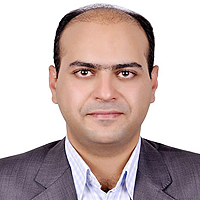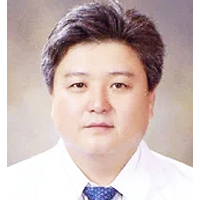Maternal mortality and factors affecting it, among pregnant women in Abeokuta South, Nigeria
Published on: 2nd July, 2019
OCLC Number/Unique Identifier: 8185504249
This observational study assessed the knowledge of pregnant women attending antenatal clinics at two selected hospitals in Abeokuta South, Nigeria on the causes and risk factors of maternal mortality, identified barriers to knowledge acquisition, and examined the influence of parity of respondents on their knowledge of factors causing maternal mortality. Maternal mortality is extremely high in Nigeria, it is defined as the death of a woman while pregnant or within 42 days of termination of pregnancy, irrespective of the duration and site of the pregnancy, from any cause related to or aggravated by the pregnancy or its management but not from accidental or incidental causes. Descriptive research design was used in this study and qualitative data from 136 respondents selected randomly, were obtained through a self-designed questionnaire that comprised three sections. Data were analyzed and indicated that parity of the pregnant women do not have an influence on their knowledge of factors responsible for maternal mortality. Findings revealed that majority (67.6%) of the respondents had high knowledge on the causes of maternal mortality – haemorrhage, sepsis, prolonged/obstructed labour, anaemia, unsafe abortion, infection, hypertensive disorders, care rendered by unskilled medical practitioners and its risk factors - parity, poverty, place of last delivery and low attendance at antenatal clinic. Educational background, marital status, irregular antenatal visits, socio-cultural practices and occupational status were identified as barriers to knowledge acquisition. This paper concluded that pregnant women may have a high knowledge about the factors responsible for maternal mortality. This is probably due to the fact that all respondents had formal education and because they were interviewed on antenatal clinic days, which suggests that they might have heard about the causes and risk factors for maternal mortality during their visits. Authors recommended that government should employ qualified health professionals and provide medical subsidy, it is hoped that this will ensure that pregnant women get quality care throughout the period of pregnancy and delivery.
A Review on filaricidal activity of phytochemical extracts against filariasis and the Parasites Genomic Diversity
Published on: 26th October, 2018
OCLC Number/Unique Identifier: 7912403155
Filariasis is one of the Neglected Tropical Diseases (NTDs) known to be of serious public health importance and pose devastating socio-economic burden especially among the poor people in tropical and subtropical countries of the world. The parasite is responsible for lymphatic filariasis affecting about 1.3 billion people in 72 countries worldwide. The major parasitic agents of the infection are three closely related nematodes of clade Onchocercidaei namely Wuchereria bancrofti, Brugia malayi and B. timori that are transmitted to human through bites by mosquitoes of genera: Aedes, Anopheles, Culex and Mansonia. The disease is targeted by the World Health Organization (WHO) for elimination by 2020 through the use of chemically synthesized drugs used as therapeutic agents to cure the disease but there are some setbacks. Phytochemical extracts are viewed as alternative therapy in the management of the disease. Additionally, the species have many ecological variants and are diversified in terms of their genetic fingerprint. This diversification in terms of genomic sequences as well as rapid infection rate warrant the lymphatic filarial parasites to respond differently to diagnostic and therapeutic interventions. Thus understanding the genomic diversity of the parasite will help in efficient therapeutic management of the disease, thereby eliminating it to prevent unnecessary suffering and contribute to the reduction of poverty. In this review, we have highlighted on the used for phytochemical extracts in the therapeutic management of the lymphatic and the molecular genetic diversity of the parasite was delineated.
Importance of prevention-A letter to the editor
Published on: 19th January, 2018
OCLC Number/Unique Identifier: 7666356186
In today’s busy world, people don’t even have the time to fall ill. Diseases don’t just demand time but also physical efforts, mental peace, loss of work, distress of loved ones and financial loss. According to a report published in Harvard business review, each year in India, 39 million people are pushed into poverty by out-of-pocket payments for healthcare, with households on average devoting 5.8% of their expenditures to medical care [1].
Pig raising practices by unprivileged, ethnic people in Bangladesh
Published on: 15th January, 2021
OCLC Number/Unique Identifier: 8899339111
We interviewed 207 pig raisers from seven different districts of Bangladesh to explore their practices related to their pig farming. We used structured questionnaires to interview the pig raisers and used descriptive statistics for analysis. Most of the pig raisers (54%) were illiterate. 50% (104) of them had a monthly income of less than 10000 BDT and 60% (124) were landless. Most of the pig raisers (92%, 191) were rearing local breed and 67% of them were practicing semi-scavenging system. As feed source 55% (114) pig owners used kitchen waste and 54% (111) used rice husk. The pig raisers mentioned different types of challenges such as social problem (16%), disease (50%), less profitable (20%) and unavailability of feed (19%). In our study, we found that 31% respondents visited veterinarians, 28% visited quack and 21% do not take any action when their pigs were sick. Only 16% pig raisers used vaccines against different infectious diseases and 36% used anthelmintics against parasitic diseases. Awareness buildup of the pig raisers may help them raising pigs in a better way which will improve the farming system and reduce the probability of disease transmission.
Long-term results of 10 years of observation of cured cases of pulmonary tuberculosis
Published on: 23rd September, 2022
Aim of the study: Conduct long-term monitoring of recovered patients with pulmonary TB and study the frequency of relapses of pulmonary TB and factors contributing to their development in the Republic of Tajikistan.Material and research methods: Of the total number of patients with pulmonary TB, 820 people in 2010-2011 after successful treatment, were transferred for further dispensary observation to PHC facilities, whose health status we monitored for 10 years (including 2020). Of the 820 patients, we were able to track the health status for 10 years in 622 patients (320 men and 302 women, age groups 19-44 years old - 330 people and 45-69 years old - 292 people). The rest - for various reasons were lost from further dispensary observation. All patients in PHC facilities annually during the period of dispensary observation underwent clinical, instrumental, laboratory, and X-ray examinations to exclude the recurrence of TB. Data for each patient were tracked using the National TB Registry OpenMRS data.Research results: The elimination of preventive anti-relapse measures in people with residual post-tuberculosis changes in the lungs led to an increase in the number of relapses of the disease. The analysis of the conducted studies shows that the incidence of relapses of pulmonary TB does not depend on the regions and the severity of TB burden, they often develop with insufficient follow-up after the end of treatment and inadequate preventive measures in dispensaries patients.The study of the reasons for the development of relapses makes it possible to timely identify a group of patients who need anti-relapse measures and prolongation of dispensary observation.Conclusion: Thus, the results of this observation revealed the occurrence of relapses within 10 years in 19.3% of cases. A retrospective analysis of the initial forms of the disease showed that relapses of pulmonary tuberculosis occurred more often in patients who had had fibrous-cavernous pulmonary tuberculosis, than in patients who had disseminated pulmonary TB, and less often after suffering infiltrative pulmonary TB. Relapses of the disease occurred more often in men aged 19-44 years. The results obtained indicate the development of relapses of pulmonary tuberculosis has a statistically significant dependence on the form of the initial disease, the presence of RPTCL, comorbid diseases such as HIV, diabetes mellitus, COPD, and the regularity of taking anti-TB drugs. At the same time, it turned out that the social status of all patients with relapses corresponds to the level of poverty, which should also be taken into account.
The needs and challenges for water footprinting in arid regions
Published on: 12th January, 2023
Climate change has left its traces on the planet in the last 3 decades. Most of the influenced areas were occupied in the Middle East which was degraded to desertification phenomena today. The per capita share of renewable water has been reduced to less than the poverty line of 1,000 m3/(capita) and in some Arab countries, to less than the extremepoverty line of 500 m3/(capita).
Examining the Effects of High Poverty and Unemployment on Rural Urban Migration in Nigeria and its Consequences on Urban Resources and Rural Decline
Published on: 2nd April, 2024
This study examines the intricate interplay among poverty, unemployment, education, and rural-urban migration in Nigeria, employing both quantitative and qualitative analyses. Quantitative data were analyzed using SPSS software, computing descriptive and inferential statistics such as regression analysis. Quantitative findings reveal income inequality, with many individuals earning below average. Education emerges as a key determinant of economic opportunities, with higher education associated with better outcomes. Moreover, poverty and unemployment exhibit a strong positive correlation with adverse outcomes, emphasizing the need for targeted interventions. Qualitative insights delve into the motivations behind rural-urban migration, shedding light on the economic drivers compelling individuals to seek opportunities in urban areas. Participants’ narratives uncover the challenges faced by migrants, from housing to accessing essential services. Additionally, the role of remittances in sustaining sending communities is highlighted, underscoring their significance. This study underscores the multidimensionality of poverty, unemployment, and migration and emphasizes the need for holistic, evidence-based approaches to promote inclusive development. Recommendations include investments in education, job creation, social safety nets, income inequality reduction, and support for migrant integration. These measures can contribute to equitable economic growth and improved well-being in Nigeria.
Case Study: Challenges Facing Africa in Fighting Climate Change
Published on: 23rd December, 2024
Africa is one of the continent’s most vulnerable to the effects of climate change despite contributing the least to global greenhouse gas emissions. The continent has faced many environmental challenges recently, including rising temperatures, altered precipitation patterns, frequent droughts, and extreme weather events. These changes exacerbate existing vulnerabilities in agriculture, water resources, human health, and infrastructure, which are vital for the livelihoods of millions of people. Africa’s population is 60% occupied by agriculture and is threatened by shifting rainfall patterns and extended droughts. Crop yields are increasingly variable, leading to food insecurity and exacerbating poverty. Water scarcity is another pressing concern, as reduced rainfall and more frequent droughts strain already limited water resources, affecting agriculture and access to clean drinking water. Coastal regions are also at risk, with rising sea levels threatening millions living in low-lying areas. In effect, the impacts of climate change extremely affect Africa’s low-level income populations, deepening social and economic inequalities. Africa’s limited financial resources and infrastructure hinder its ability to adapt to these challenges. Nonetheless, Africa also has the potential for resilience through nature-based solutions, renewable energy investments, and regional cooperation. Efforts to enhance climate adaptation, such as sustainable farming practices, improved water management, and climate-smart policies, are critical in building the resilience of communities in combating climate change.
















